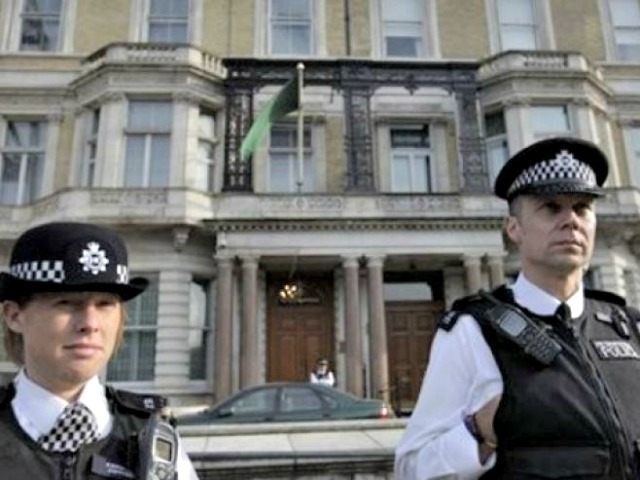On June 11 The Washington Post intimated that police in America might not face the tensions they currently face if they shot less and talked more.
The Post reached this verdict via a comparison between the tactics of “lightly armed” British police and those of heavily armed Americans.
According to WAPO, “the elite cadre of British cops who are entrusted with guns almost never use them. Police in Britain have fatally shot two people in the past three years.” They then report that shooting two people in three years is “less than the average number of people shot and killed by police every day in the United States over the first five months of 2015.”
They quote various sources to suggest the lack of police shootings in Britain are the result of “extremely tight protocols” whereby “shooting at moving vehicles, people brandishing knives and suspects fleeing a scene are all strictly forbidden except under extreme circumstances.”
Greater Manchester Police chief Peter Fahy said, “There’s a huge emphasis on human rights, a huge emphasis on proportionality, a huge emphasis on considering every other option.”
Note the focus on “proportionality,” which indicates that police do not respond with greater force–greater weaponry–than confronts them. This was our unspoken policy in the Vietnam War, and how did that work out?
The WAPO does not make the connection, but one British officer they interviewed was stabbed twice in his career–which relates back to the “tight protocols” against brandishing a gun against people armed with knives. American police would have used their guns to prevent harm to themselves by a man armed with a knife. This is a crucial point, because American police are not simply shooting aggressors because aggressors have guns but because they intend to harm or kill with whatever weapon is at hand–even if the only weapon is their own hands.
This defeats one of the more simplistic points offered up by the WAPO, wherein they point out that Britain has tight gun controls, while “the United States has some of the world’s loosest gun laws and some of the highest rates of gun ownership.” What the WAPO misses here is that America has recognized the unalienable right to keep and bear arms throughout its history, yet widespread gun ownership has not correlated with aggression toward officers. That aggression–now evident in various segments of American society–is arguably rooted in causes that have little to do with owning firearms.
Yet the WAPO points to the British example of diplomacy instead of force, suggesting American police could learn something from the example. They again quote Chief Fahy, who said he tells his British officers, “Your first consideration is, ‘Can you talk this through? Can you buy yourself time?’”
It is important to note that American officers also use diplomacy, but once an attack is under way, diplomacy is a spent option.
Consider the situation between Ferguson, Missouri’s Michael Brown and Officer Darren Wilson. Brown was unarmed, yet much larger than Wilson, and he came at Wilson while Wilson sat in his patrol car, which gave Brown an even greater physical advantage over the sitting officer.
The WAPO reported what happened next:
Wilson testified before the grand jury that Brown reached for his (Wilson’s) gun and a struggle for the gun followed, during which Wilson fired two shots. Later, Wilson pursued Brown and, after he turned and then charged toward Wilson, fired multiple shots bringing him to the ground about 8 to 10 feet away from him.
The physical evidence is consistent with his testimony.
Again, Brown was not armed with a gun or a knife–simply his bare hands and his brute strength. But officer Wilson was found justified in shooting, because his life was in danger.
To compare British policing with American policing based on which society is gun controlled and which is free is simply not a good comparison. And to suggest that an officer in Wilson’s position should continue with dialogue while a large, angry man was trying to take his gun away is sheer lunacy.
Follow AWR Hawkins on Twitter @AWRHawkins. Reach him directly at awrhawkins@breitbart.com.

COMMENTS
Please let us know if you're having issues with commenting.